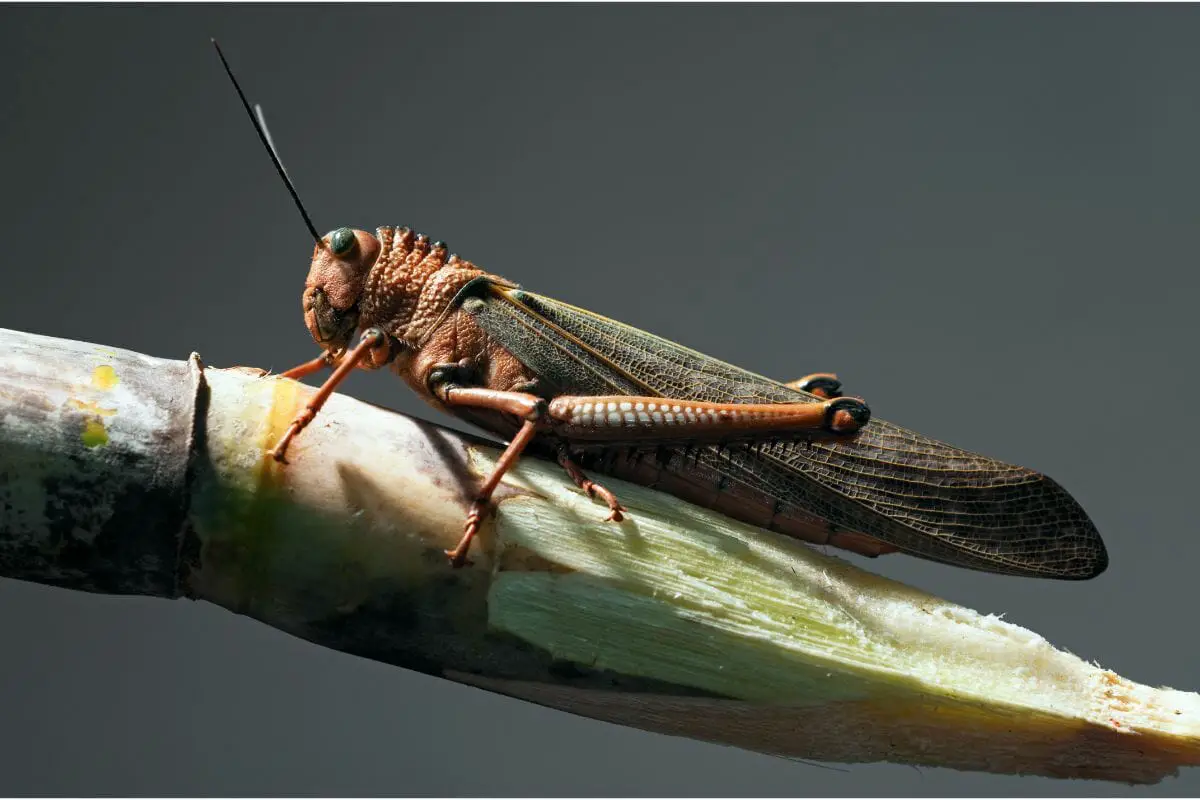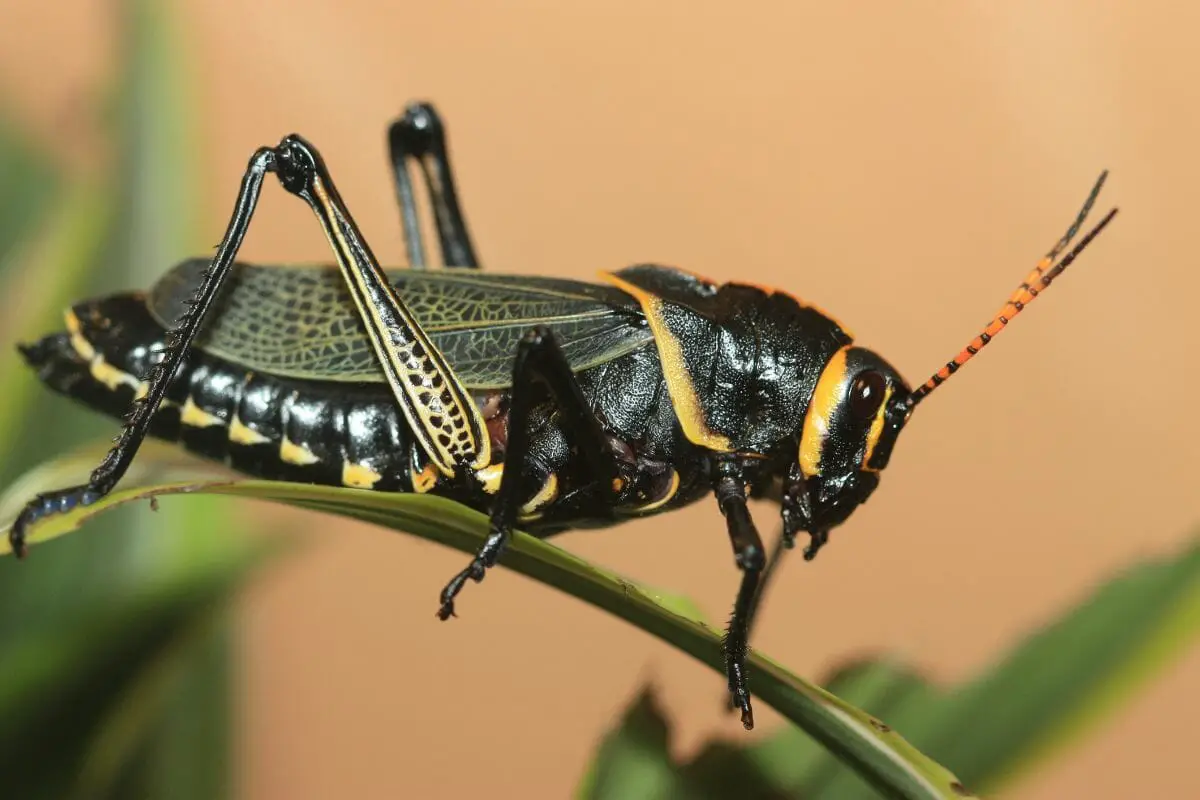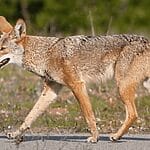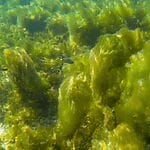For tiny little critters, locusts have a fearsome reputation.
Since the times of the Pharaohs and the bible, locusts- swarms of them- have been responsible for the collapse of whole civilizations, devouring crops at a terrifying rate and leaving scores of people to starve in their wake.

Even today, they still wreak havoc on societies.
So, locusts have garnered themselves a fearsome reputation, but what more do people know about them? The truth is, not a lot. In this article. We’re hoping to give the locust a little positive PR.
We’ll compile a little fact file on locusts, before looking at some of the different types of locusts we see across the world.
What Are Locusts?
Locusts, known by the scientific name Acrididae, are a type of invertebrate similar in many ways to ordinary grasshoppers. They typically measure somewhere between 0.5 and 3 inches, and have a lifespan of a few months.
Like grasshoppers, locusts are equipped with large hind legs that help them to jump or ‘hop’ many times their own body length, and they often follow the same solitary lifestyle as grasshoppers, too.
Unlike grasshoppers, though, locusts can enter their ‘gregarious phase’, a uniquely hypersocial state brought about by specific environmental conditions. The result is the dreaded locust swarm.
Locust Swarms
Dry weather forces locusts to congregate in areas of patchy vegetation. The shock of being crowded together excites the locusts, making them more sociable and promoting more frenzied movement and appetites.
When the weather turns and more plants become available to eat, the population of these hyperactive locusts explodes. The locusts switch to a group lifestyle, and in fact, are physically changed by this shift.
Their brains get larger, they can change color and body shape, and their endurance improves.
The result is a ‘swarm’ of millions of locusts that can cover up to 80 miles in a single day, and leaves catastrophic agricultural damage in its wake.
Types Of Locust
There are 10 currently extant species of locusts in the world. Let’s take a look at some of them:
The Desert Locust (Schistocerca Gregaria)
The desert locust is unquestionably the most destructive, and therefore the most feared, of all the locust species.
During quieter periods, the desert locust inhabits about 30 countries spread out across roughly six million square miles of Africa, the Middle East, and Asia.
But in times of a locust plague, when millions of locusts swarm together, desert locusts have a total range of some 60 different countries, covering about a fifth of the World’s land surface.
Such are their sheer numbers and range that desert locusts threaten approximately 10% of the world’s population with economic destitution and starvation.
It’s not surprising when you hear the figures involved, as a swarm of desert locusts is almost beyond comprehension.
In less than half a square mile, there can be anywhere between 40 and 80 million locusts, and a swarm can measure up to 460 square miles in size.
The facts are frightening. Given that each locust can consume its own body weight in plants each day, a swarm of this size would eat a jaw-dropping 423 million pounds of plants every day.
A swarm only the size of Paris can consume the same amount of food as half of the entire French population would in just one day.
Australian Plague Locust (Chortoicetes Terminifera)
Locusts aren’t just confined to Europe and Asia, they can be found right across the world. In Australia, one of the biggest agricultural pests is the Australian plague locust.
When fully developed, these brown/green locusts typically measure between 0.7 inches and 2 inches in length.
These locusts range across much of Australia, from Western Australia and Queensland into South Australia and the far northwest of New South Wales.
At times, they can make their way down onto the coastal plains to ravage some of Australia’s key agricultural areas in South Australia and New South Wales.

Swarms are common, occurring about once every three years on average in central Eastern Australia, and can last for several days at a time.
Swarms of Australian plague locusts are still impressive and indeed destructive, but come nowhere near the desert locust in terms of raw destructive power.
Swarms may move up to 20 miles a day up to a total distance of 500 miles, and can infest areas of nearly 20 square miles, although the typical swarm size is less than 2 square miles.
The High Plains Locust (Dissosteira Longipennis)
Along with the Rocky Mountain locust, the high plains locust was one of two species that once swarmed across the North American continent.
The Rocky Mountain locust is now extinct and was last spotted in the early 20th century, whilst the high plains locust is now very rare and no longer swarms.
The last great swarm of the high plains locust was in the 1930s, which caused significant crop damage and, along with the dust bowl and the great depression, helped to depopulate large swathes of the great plains and midwest regions of the United States.
Migratory Locust (Locusta Migratoria)
The migratory locust is the most widespread of the locust species, found across the world in Asia, Australia, New Zealand, Africa, and Europe, although it is now rare in the latter.
Because it is so widespread, there are many different subspecies of migratory locust, though not all experts agree that all these subspecies are in fact genuine.
Like other locusts, they have two distinct phases, the solitary phase and the gregarious phase. In the gregarious phase, adults measure anywhere between about 1.8 and 2.3 inches in length and take on an increasingly vivid brownish yellow color.
Migratory locusts are extremely mobile, able to fly at speeds of over 10 miles per hour with the wind behind them, and can cover up to 80 miles in a day.
Whilst they still swarm, migratory locusts are deemed less of a threat than other species. They are still closely monitored, but in Africa, for instance, the last major Migratory locust plague occurred between 1928 and 1942.
Recent changes to the environment and physical geography of Africa make the development of new plagues unlikely.








